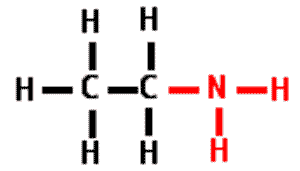
However, the classification as essential or nonessential does not actually reflect their importance as all 20 amino acids are necessary for human health.Įight of these amino acids are essential (or indispensable) and cannot be produced by the body.

Accordingly, scientists recognize three amino acid types: Classifications of Amino AcidsĮxperts classify amino acids based on a variety of features, including whether people can acquire them through diet. This all adds to the mystery, complexities and strong scientific value of amino acids. Yet it is likely that day will not come anytime soon. Once that is accomplished-but only until then will our knowledge of amino acids and proteins be satiated. The future of protein and amino acids chemistry is lying in biochemistry. Much more should be discovered in the analysis of amino acids as well as finding new amino acids. But many years have gone by since Braconnot first initiated such observations. While progress was slow at that time, it has since gained plenty of speed, although the complicated processes of protein composition have not entirely been uncovered even to this day. He was attempting to uncover whether proteins acted like starch or whether they are made of acids and sugar. Moving forward in time to 1820, Braconnot prepared glycine directly from gelatin. Processes and technical applications such as glue preparation, cheese manufacturing and even the discovery of ammonia via the filtering of dung, occurred centuries ago. Protein chemistry is age-old, with some dating back thousands of years ago. Throughout the centuries, amino acids have been discovered in a variety of ways, though primarily by way of chemists and biochemists of high intelligence who possessed the greatest skills and patience and who were innovative and creative in their work. The amino acids are a result of protein hydrolysis. It is important to know that, when one-letter system is used, such as «G» for glycine, which is more commonly used nowadays, it is referring to synthesized peptides from the coded amino acids groups.

When the system was introduced, it was thought primarily to save space, rather than simplify amino acid names. For instance, the simplest amino acid, glycine is depicted as H-Gly-OH, with the «H» and the «OH» being «H2O», which represents the H2O at the time of amino acid condensing in order to form a peptide.Īnother way to look at the three-letter abbreviation system is that it captures the amino acid residual state, which comprises proteins and peptides. A reason is to make them easy to identify and to use more manageable three-letter system. To understand the amino acids' abbreviation, it is important to know why their names have been shorten in the first place. Without alpha-amino acids human may experience fatigue, irritability, hormonal imbalances and sometimes even depression. If amino acids are deficient the protein synthesis would stop. The amino acids are imperative for sustaining the health of a human body.


 0 kommentar(er)
0 kommentar(er)
